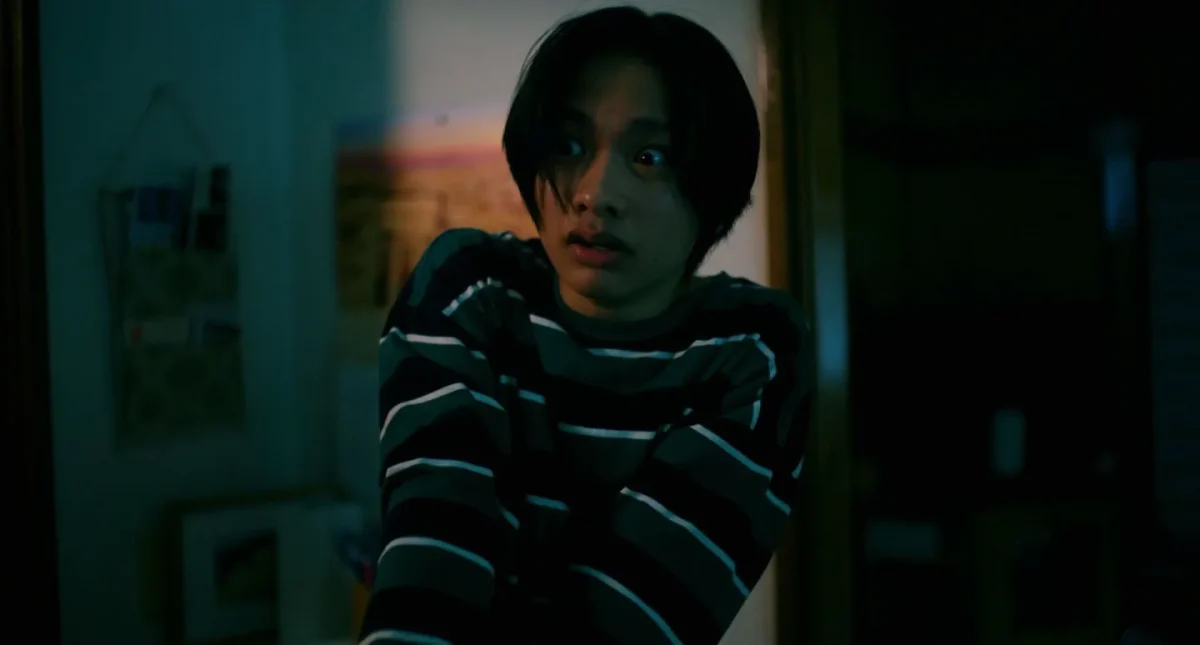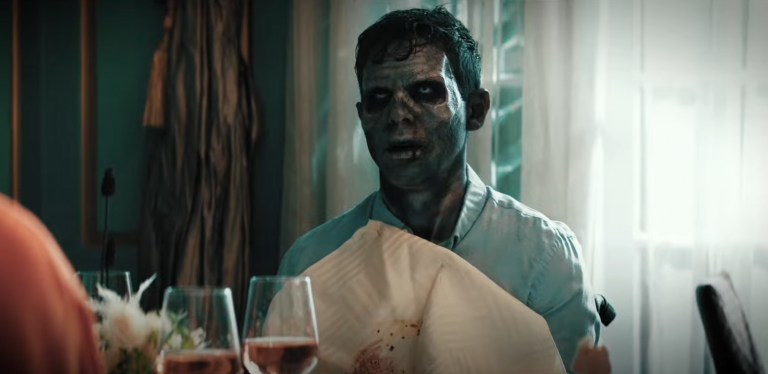Sayuri (also known as House of Sayuri) is a 2024 Japanese horror movie directed by Kôji Shiraishi, known for his work in the found-footage and supernatural horror genres. On the surface, it’s a story about a family—the Kamikis—who finally achieve their dream of buying a spacious countryside home. But this dream is soon corrupted by eerie voices, ghostly apparitions, and a dark past coming to life. The horror spins not just from jump scares or traditional specters, but from the slow revelation of trauma, secrets, and ancestral sins. Central to the haunting is Sayuri, the vengeful ghost of a murdered girl whose death binds the house and threatens the entire Kamiki family’s peace and future.
What sets Sayuri apart is its layered storytelling—the mixture of traditional Japanese ghost story tropes with familial bitterness, dementia-fueled mysticism, and generational curses. At the core is Norio, the eldest son, and his grandmother Harue, whose dementia begins to clear just enough to grasp the supernatural threat. Through the film’s increasingly violent and tragic events, the family’s bond is pushed to the brink as they uncover Sayuri’s dark history and their home’s hidden sins. The movie’s tonal shifts—from chilling to occasionally campy—complement the unfolding tragedy and commentary on how past atrocities infect the present. The key question haunting audiences: what is Sayuri truly seeking—justice, revenge, or peace—and can the Kamiki family survive this reckoning?
This article contains spoilers revealing the full plot and ending of Sayuri (House of Sayuri) (2024). Proceed only if you have seen the film or don’t mind knowing its key twists and conclusions.
Sayuri (2024) Plot Summary & Movie Synopsis:
After years of saving and sacrifice, the Kamikis—a family of seven including parents Akio and Masako, daughter Keiko, sons Norio and Shun, their dementia-afflicted grandmother Harue, and grandfather Kitaro—finally move into their dream house in the countryside. The initial joy and familial harmony are unmistakable: mealtimes filled with banter and children’s laughter. However, things soon take a dark turn. The family begins experiencing eerie phenomena—fleeting shadows, disembodied voices, and inexplicable accidents. The source of these supernatural disturbances is revealed to be Sayuri, the ghost of a murdered girl once tied to the home’s previous occupants. Her malevolent presence spreads fear, possession, and violence. While most family members become victims to Sayuri’s wrath, two remain relatively immune: Norio, the responsible eldest son, and his grandmother Harue. Despite her dementia, Harue experiences moments of terrifying clarity. Together, Norio and Harue delve into Sayuri’s tragic past, determined to uncover the truth behind the girl’s death and free their family from the haunting.
Is the home truly haunted?
Sayuri weaves the classic haunted house narrative with deep cultural and familial contexts. The house itself becomes a character — its walls echoing histories of pain and injustice. The paranormal activity escalates beyond scares, manifesting as physical harm and emotional fractures within the Kamikis. The tension builds as the family realizes that Sayuri’s vengeance is tied to unresolved atrocities that occurred long before their arrival.
How does family cope?
Norio and his grandmother Harue form a focal point against the supernatural threat. Harue’s dementia, often a symbol of mental fading, paradoxically grants her moments of enhanced perception—allowing her to act as the family’s spiritual protector. Her determination contrasts with the younger family members’ terror and helplessness, turning age and illness into unexpected sources of strength.
10 Must-Watch Asian Horror Films Available for Streaming
Why is Sayuri’s past important?

Sayuri was a young girl who suffered a violent death within the house’s walls. Her spirit lingers, compelled by unresolved trauma and seeking acknowledgment or justice. Through Norio and Harue’s investigations, flashbacks reveal the darker history—unearthing the sins of previous residents—and the lingering consequences of neglect and cruelty. The ghost’s wrath is not random but a response to grave injustice, making the family’s plight simultaneously supernatural and deeply human.
Why does the tone shift?
The film’s tonal shifts might surprise some viewers. While the first half unfolds with measured dread and effective scares, the latter part incorporates moments that verge on camp or black comedy. This mix of emotions serves to both unsettle and engage, although some find this uneven. Importantly, the tonal variation reflects the complexity of grief and family dynamics—how laughter and tragedy can coexist even in the darkest moments.
Sayuri (2024) Movie Ending Explained:
What happens in the climax?
The climax of Sayuri revolves around Norio and Harue’s attempts to banish the ghost from their home. Using a combination of traditional spiritual practices and uncovered truths about Sayuri’s past, they confront the spirit in a tense face-off. Harue’s moments of lucid strength prove critical as she channels protective energy and aids in the ritualistic efforts. Despite their efforts, the house’s dark history proves stubborn. The film ends on a tone both tragic and hopeful—while Sayuri’s spirit is placated, the cost has been high. Not all family members survive unscathed, and the trauma lingers, symbolizing how past violence continues to shape the present.
What Does Sayuri Want?
Is Sayuri’s spirit malevolent or misunderstood? The film suggests she is neither purely evil nor innocent but a tragic victim whose violent end has left her soul restless. Her hauntings are cries for recognition, justice, and ultimately release. The movie’s thematic core revolves around confronting buried truths and finding peace, rather than simply defeating an evil ghost.
Can family bring healing?
Throughout Sayuri, family bonds are tested and reforged. The grandmother-grandson duo’s fight against the spirit symbolizes bridging generational divides and confronting legacy pains. The Kamiki family’s ordeal serves as a metaphor for how families must face uncomfortable truths to heal, and how love provides resilience even against supernatural forces.







